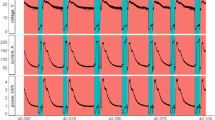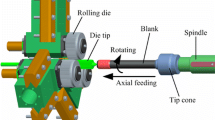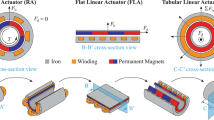Abstract
Wire bonding has been one of the standard operations in plastic integrated circuit (IC) package assembly for a long time. With the development of IC assembly technology, the equipment of wire bonding should be improved for even higher performance. Thus, a novel linear wire bonding head driven by a permanent magnet linear motor (PMLM), instead of the rotary bonding structure, is designed to optimize the system structure and improve the performance of wire bonding. Based on two different wire bonding states, the switching control scheme corresponding to this linear structure is presented. In free motion, the position tracking control suppressing the vibration of flexible parts of the structure is performed at high speed and acceleration. In constrained motion, the active force control with direct contact force feedback is adopted for more precise bonding force compared with the indirect current feedback control in previous rotary structure. The experiment results show higher performance of wire bonding because of the combination of novel linear structure and control scheme.
Similar content being viewed by others
References
George G, Harman (1997) Wire bonding in microelectronics: materials, processes, reliability, and yield. ISBN 0-7-032619-3. Donnelley, Chicago, IL
The report of SEMATECH, Inc. (1997) Wire bonder specific equipment model. 5 Dec 1997
Spector VA, Flashner H (1995) Modeling and design implications of Control. IEEE Trans Robot Automat 11:760–765
KAIJO (2006) FB series.http://www.kaijo.co.jp/index_e.htm
Kulicke & Soffa (2006) 4500 series.http://www.kns.com
Matsuno F, Ohno T (1997) Distributed parameter control of large space structures with lumped and distributed flexibility. Proc IEEE Int Conf Decis Control 269–274
Luo ZH (1993) Direct strain feedback control of flexible robot arms: New theoretical and experimental results. IEEE Trans Automat Contr 38:1610–1622
Matsuno F, Kasal S (1998) Modeling and robot force control of constrained one-link flexible arms. J Robotic Syst 15(8):447–464
McClamroch NH, Wang D (1988) Feedback stabilization and tracking of constrained robots. IEEE Trans Automat Contr 33(5):419–426
Chiou C, Shahinpoor M (1994) Dynamic stability analysis of a two-link force-controlled flexible manipulator. ASME J Dyn Sys Means Control 10(3):287–297
Marth GT,Tarn TJ, Bejczy AK (1993) Stable phase transition control for robot arm motion. Proc 1993 IEEE International conference on Robotics and Automation, Atlanta, GA, pp 355–362
Khalil HK (1992) Nonlinear systems. Macmillan, New York
Acknowledgements
The work is jointly supported by the projects of the National Natural Science Foundation
Grant No. 50390063, 50390064.
Author information
Authors and Affiliations
Corresponding author
Rights and permissions
About this article
Cite this article
Fang, L., Yin, Y.H. & Chen, Z.N. Design and control of a novel linear wire bonding head. Int J Adv Manuf Technol 35, 1136–1144 (2008). https://doi.org/10.1007/s00170-006-0795-9
Received:
Accepted:
Published:
Issue Date:
DOI: https://doi.org/10.1007/s00170-006-0795-9




